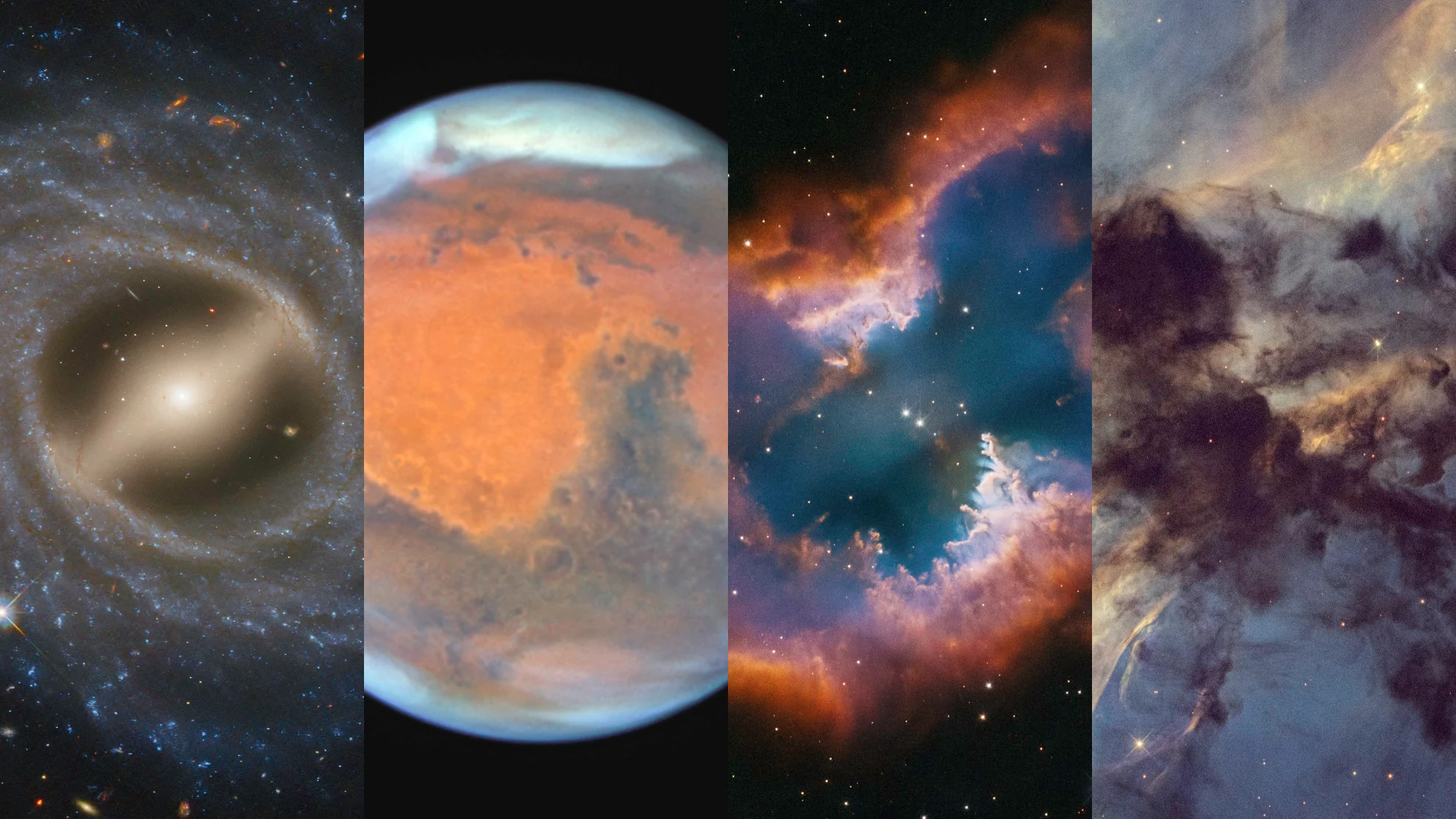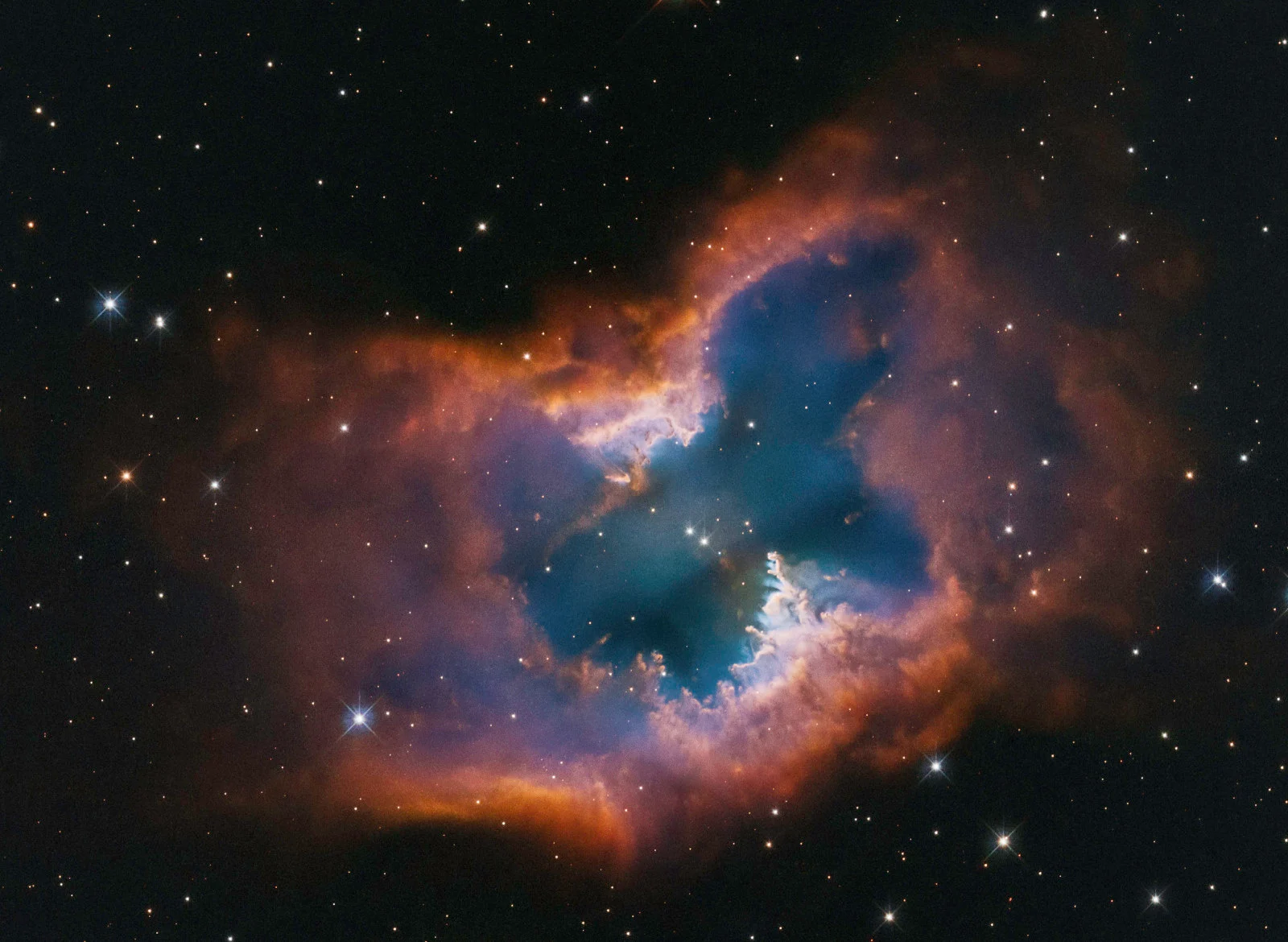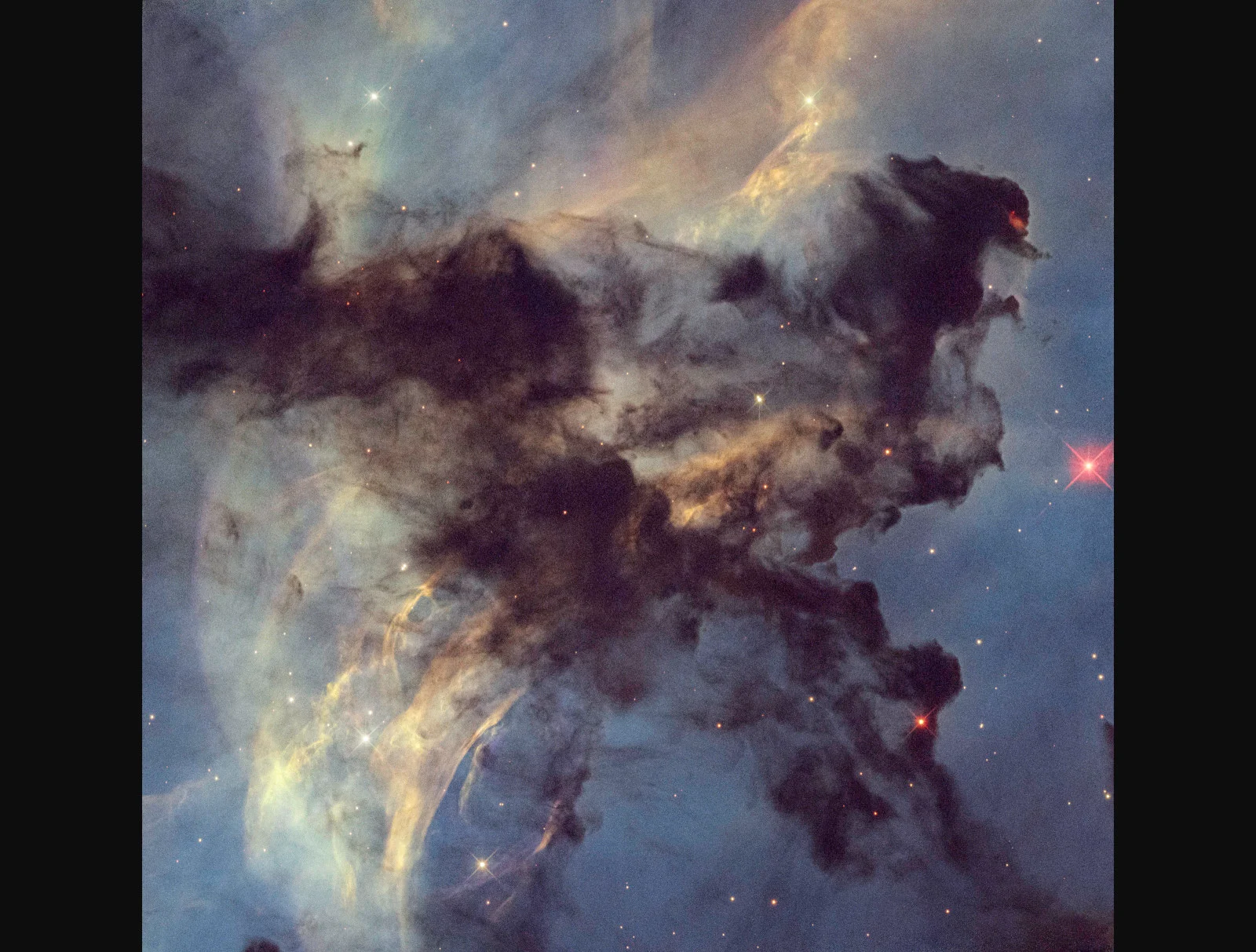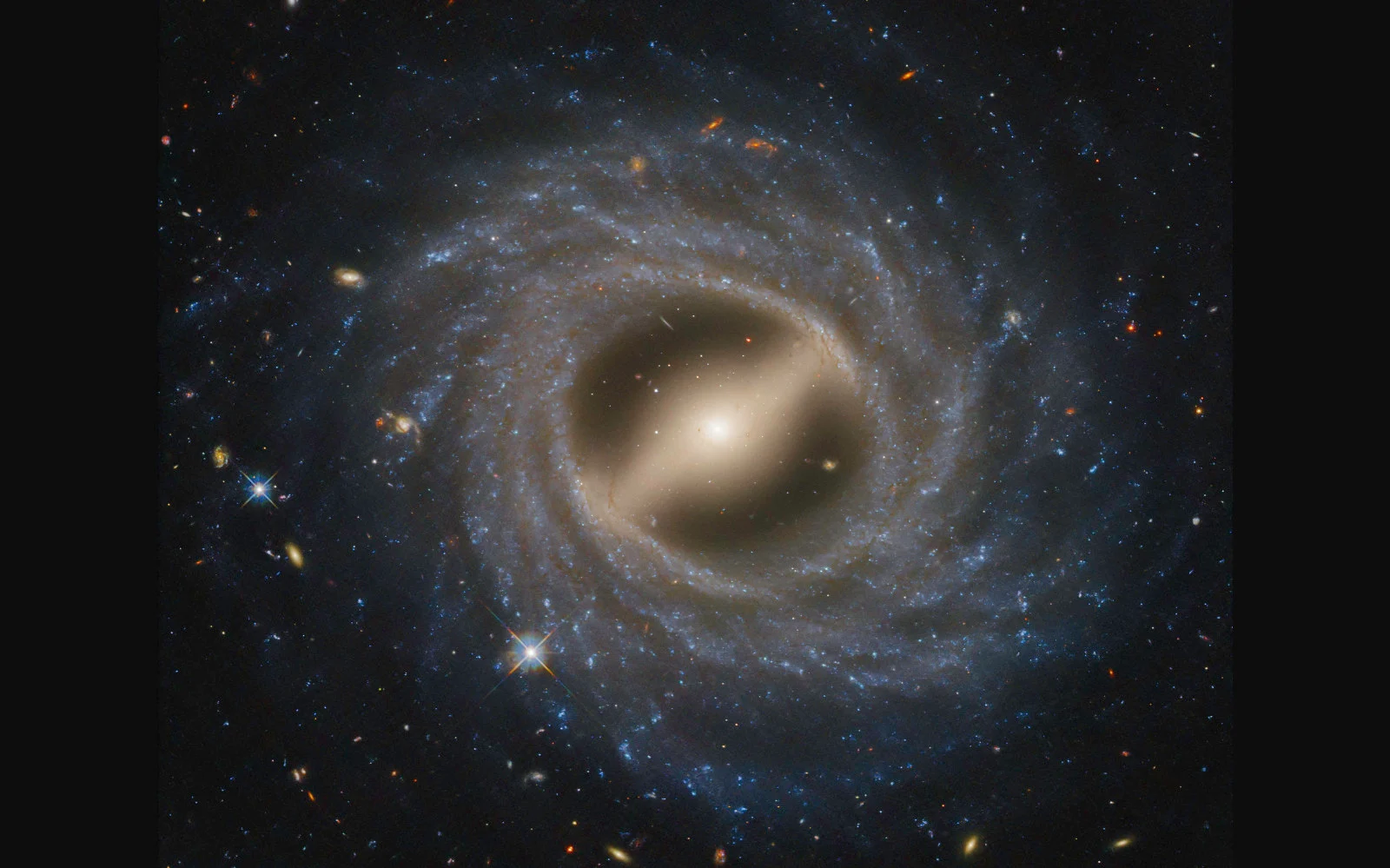
Hubble celebrates 35 years with new images from our solar system and beyond
Happy Anniversary, Hubble!
Thirty-five years after its launch into space, the Hubble Space Telescope is still wowing us with its views of the universe, and the cosmic mysteries it is helping unlock.
On April 24, 1990, the Space Shuttle Discovery blasted off from Kennedy Space Center, carrying the new Hubble Space Telescope into Earth orbit. Now, 35 years later, NASA and the European Space Agency are celebrating the mission's milestone 35th anniversary by releasing amazing new images.
"Hubble opened a new window to the universe when it launched 35 years ago. Its stunning imagery inspired people across the globe, and the data behind those images revealed surprises about everything from early galaxies to planets in our own solar system," Shawn Domagal-Goldman, acting director of the Astrophysics Division at NASA Headquarters, said in a press release.
"The fact that it is still operating today is a testament to the value of our flagship observatories, and provides critical lessons for the Habitable Worlds Observatory, which we plan to be serviceable in the spirit of Hubble," Domagal-Goldman added.
Hubble has provided us with incredible imagery of planets, moons, and other objects in our own solar system. It has also given us insights into planets around other stars as well, by allowing astronomers to observe exoplanets as they form, capture starlight filtering through an alien world's atmosphere, and even detect the signatures of water vapour and organic chemicals on planets in their star's 'habitable zone'. Until the James Webb Space Telescope turned on in 2022, it had also given us our deepest and most spectacular looks into the cosmos.
DON'T MISS: Get to know the hidden gems across Canada
Here are the latest images from the telescope, to celebrate this anniversary.
A fresh look at a neighbouring world
In late December 2024, as Mars was just over 91 million kilometres away and approaching its January opposition — its closest approach to Earth in a couple of years — Hubble turned towards it to grab two views, revealing the major features of the Red Planet.

Two Hubble images of Mars, taken on December 28 and December 29, 2024, show the planet over 17 hours apart. With Mars' 24 hour and 37 minute day, these images do not capture the full globe of the planet, but do reveal its major features to us. (NASA, ESA, STScI; Image Processing: Joseph DePasquale (STScI))
"In the left image, the bright orange Tharsis plateau is visible with its chain of dormant volcanoes. The largest volcano, Olympus Mons, pokes above the clouds at the 10 o’clock position near the northwest limb. At an elevation of 70,000 feet, it is 2.5 times the height of Mt. Everest above sea level. Valles Marineris, Mars’ 2,500-mile-long canyon system, is a dark, linear, horizontal feature near center left," NASA said. "In the right image, high-altitude evening clouds can be seen along the planet’s eastern limb. The 1,400-mile-wide Hellas basin, an ancient asteroid impact feature, appears far to the south. Most of the hemisphere is dominated by the classical “shark fin” feature, Syrtis Major."
Moth-like remnant of dead stars

Planetary nebula NGC 2899, imaged on January 8, 2025. (NASA, ESA, STScI; Image Processing: Joseph DePasquale (STScI))
"This object has a diagonal, bipolar, cylindrical outflow of gas. This is propelled by radiation and stellar winds from a nearly 40,000-degree-Fahrenheit white dwarf at the center," NASA explained. "In fact, there may be two companion stars that are interacting and sculpting the nebula, which is pinched in the middle by a fragmented ring or torus — looking like a half-eaten donut. It has a forest of gaseous “pillars” that point back to the source of radiation and stellar winds. The colors are from glowing hydrogen and oxygen. The nebula lies approximately 4,500 light-years away in the southern constellation Vela."
RELATED: Weather Network meteorologist's name is now written among the stars
A dark, dusty stellar nursery

A small region of the Rosette Nebula, just four light years across compared to the full 100 ly span of this feature, captured by Hubble on December 27, 2024. (NASA, ESA, STScI; Image Processing: Joseph DePasquale (STScI))
"Dark clouds of hydrogen gas laced with dust are silhouetted across the image. The clouds are being eroded and shaped by the seething radiation from the cluster of larger stars in the center of the nebula (NGC 2440)," NASA stated in the image release. "An embedded star seen at the tip of a dark cloud in the upper right portion of the image is launching jets of plasma that are crashing into the cold cloud around it. The resulting shock wave is causing a red glow. The colors come from the presence of hydrogen, oxygen, and nitrogen."
Exquisite flocculence

Flocculent barred spiral galaxy NGC 5335, located in the constellation Virgo. (NASA, ESA, STScI; Image Processing: Alyssa Pagan (STScI))
"NGC 5335 is categorized as a flocculent spiral galaxy with patchy streamers of star formation across its disk. There is a striking lack of well-defined spiral arms that are commonly found among galaxies, including our Milky Way," says NASA. "A notable bar structure slices across the center of the galaxy. The bar channels gas inwards toward the galactic center, fueling star formation. Such bars are dynamic in galaxies and may come and go over two-billion-year intervals. They appear in about 30 percent of observed galaxies, including our Milky Way."
MORE FROM SPACE: NASA SPHEREx will map the cosmos to unlock its deepest mysteries
Stellar sculptors

Star cluster NGC 346 in the Small Magellanic Cloud features gas and dust being sculpted into beautiful form by stellar winds. (ESA/Hubble and NASA, A. Nota, P. Massey, E. Sabbi, C. Murray, M. Zamani (ESA/Hubble))
"This new image showcases the dazzling young star cluster NGC 346. Although both the James Webb Space Telescope and Hubble have released images of NGC 346 previously, this image includes new data and is the first to combine Hubble observations made at infrared, optical, and ultraviolet wavelengths into an intricately detailed view of this vibrant star-forming factory," the European Space Agency said. "The inhabitants of this cluster are stellar sculptors, carving out a bubble within the nebula. NGC 346's hot, massive stars produce intense radiation and fierce stellar winds that pummel the billowing gas of their birthplace, dispersing the surrounding nebula. The nebula, named N66, is the brightest example of an H II (pronounced ‘H-two’) region in the Small Magellanic Cloud. H II regions are set aglow by ultraviolet light from hot, young stars like those in NGC 346. The presence of this nebula indicates the young age of the star cluster, as an H II region shines only as long as the stars that power it — a mere few million years for the massive stars pictured here."
Although the younger and more powerful James Webb Space Telescope is providing us with its own views of the universe, even after 35 years, Hubble still fills an important role in our observations of the cosmos.
Whereas Webb views space in the infrared — wavelengths of light too long for our eyes to pick up — Hubble collects light from ultraviolet through the visible part of the spectrum and into the near infrared. Therefore, Hubble gives us a look at the depths of space that is much closer to how our own eyes would see it.
